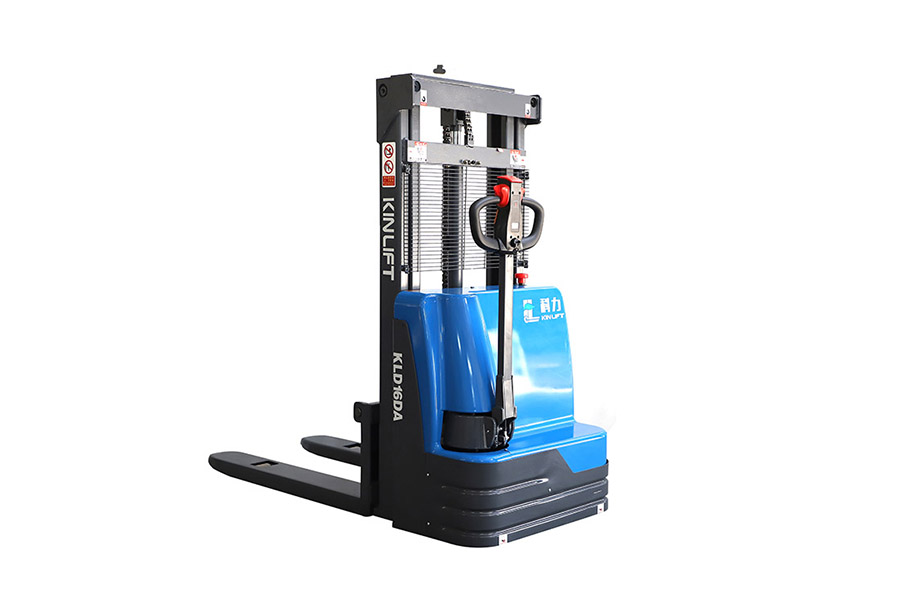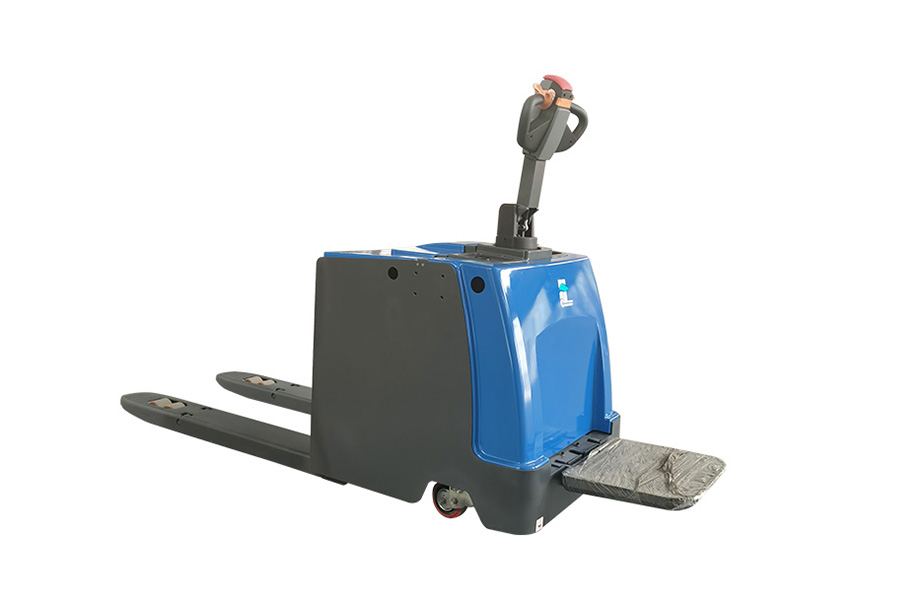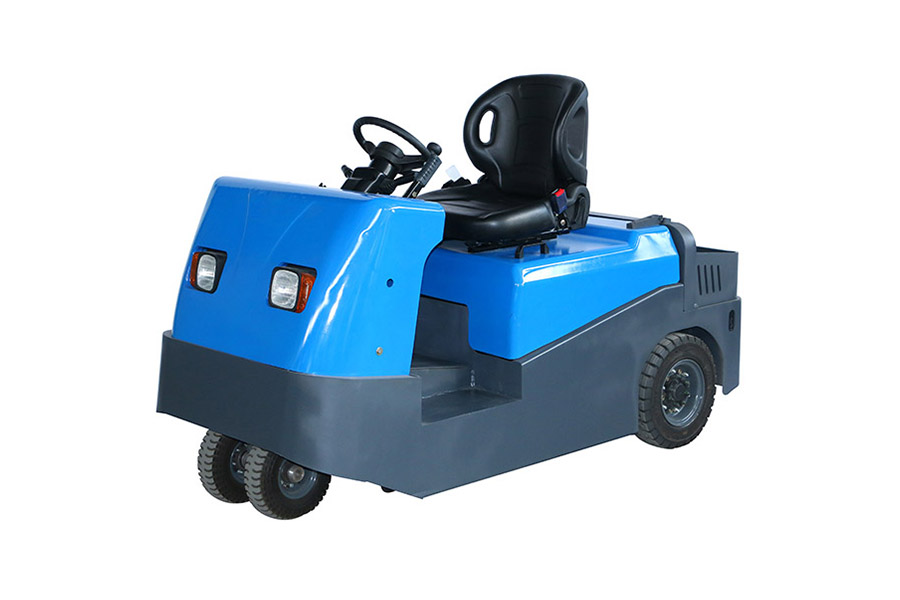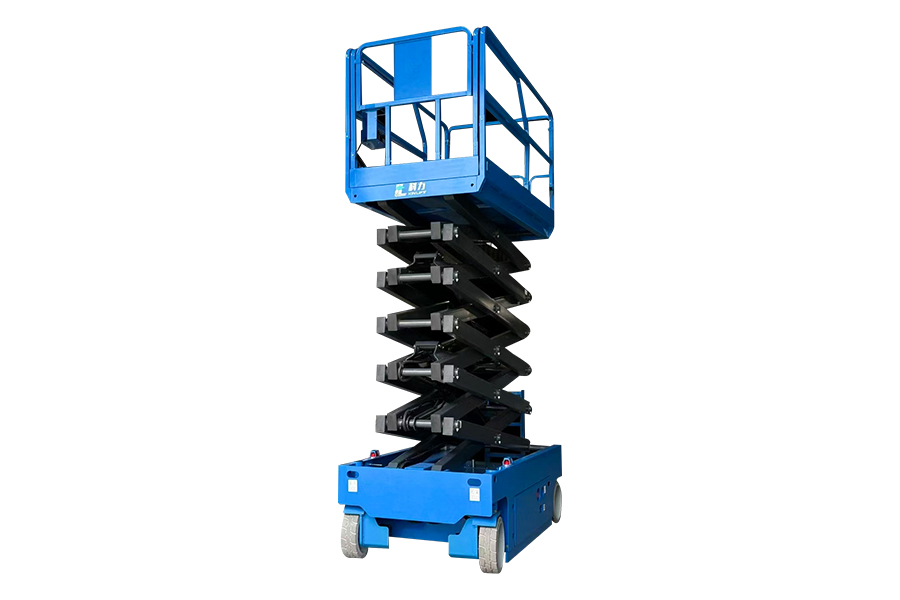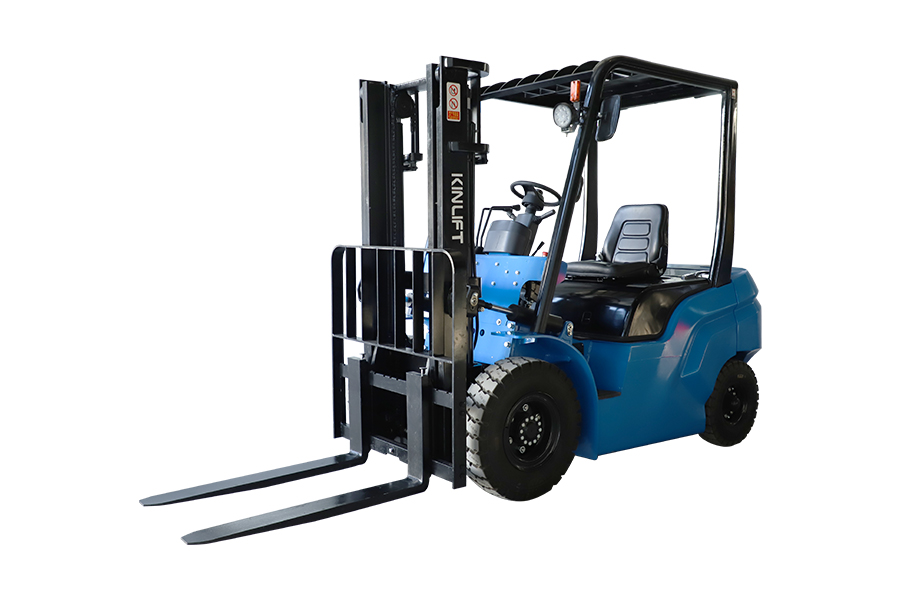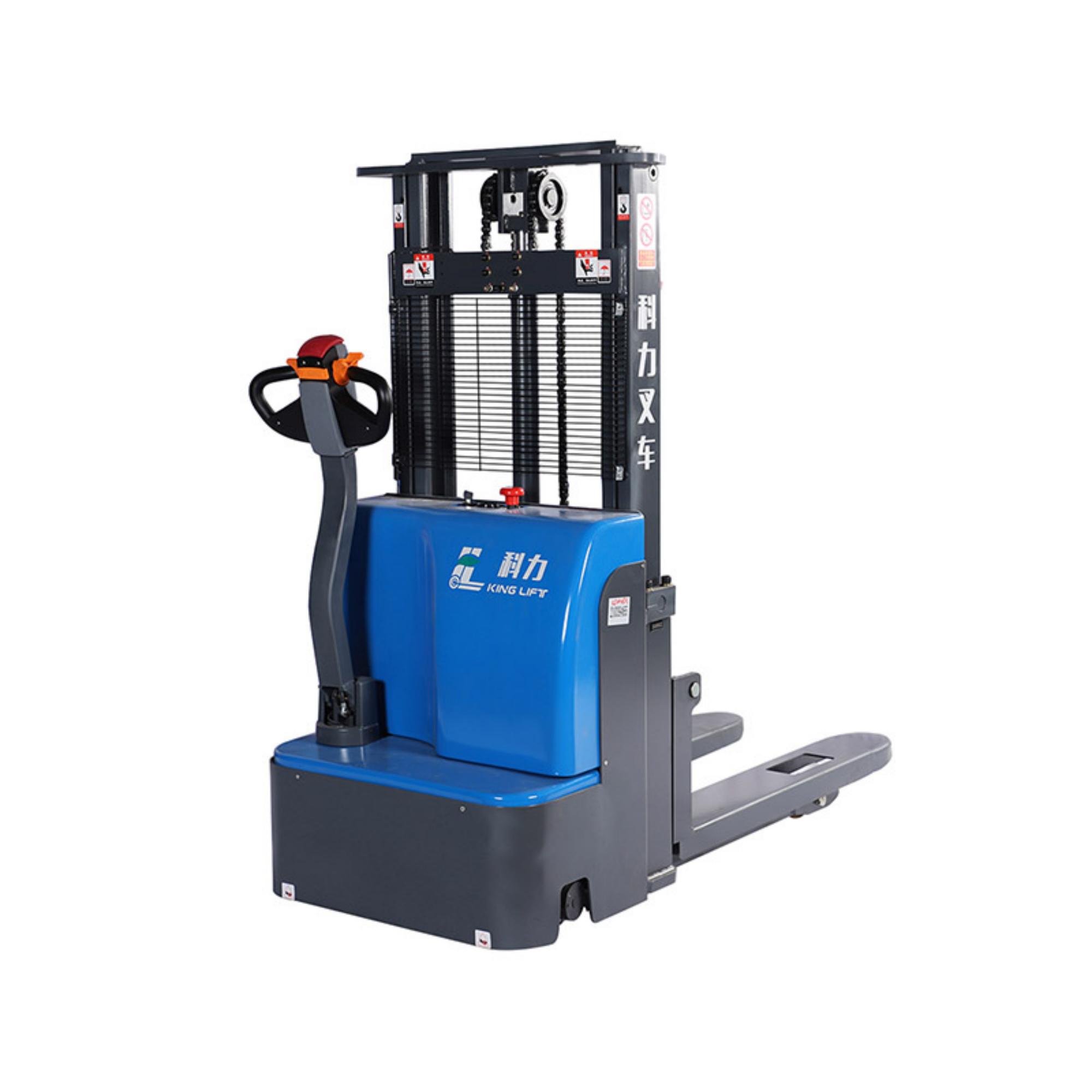1. Principle of the hydraulic system and implementation of the tilting of the fork
The hydraulic system of the electric reach forklift is one of its core power transmission systems, which is mainly composed of hydraulic pumps, hydraulic oil tanks, control valves, hydraulic cylinders and connecting pipes. When the operator needs to adjust the tilt angle of the fork, the entire system begins its working journey.
First, the hydraulic pump starts, extracts hydraulic oil from the hydraulic oil tank, and delivers it to the control valve through pressure increase. The control valve is the "commander" in the hydraulic system, which accurately adjusts the flow direction and flow of the hydraulic oil according to the operator's instructions (input through the joystick or button). When the operator issues a tilt command, the control valve guides the hydraulic oil into the hydraulic cylinder related to the tilt of the fork.
The hydraulic cylinder is an actuator with a piston and a piston rod inside. When the hydraulic oil enters the cylinder, the piston is pushed by pressure, driving the piston rod to extend and retract, thereby realizing the tilting action of the fork. This process requires not only stable flow and moderate pressure of the hydraulic oil, but also precise adjustment of the control valve to ensure smooth and precise action.
2. Operation process of fork tilt function
In actual operation, the operator needs to issue tilt instructions through the joystick or button on the forklift according to the specific needs of cargo handling. These instructions are transmitted to the control valve through the electrical system, and the control valve then adjusts the flow direction of the hydraulic oil so that the hydraulic oil enters the designated hydraulic cylinder and pushes the fork to tilt forward and backward.
The adjustment of the tilt angle usually has a fine-tuning function, allowing the operator to accurately adjust the tilt of the fork within a smaller range to adapt to cargo of different shapes and sizes and handling environments. In addition, some high-end forklifts are also equipped with automatic tilt control systems that can automatically adjust the tilt angle according to the weight of the cargo and handling requirements, further improving handling efficiency and safety.
3. The importance of the tilt function in cargo handling
The forward and backward tilt function of the fork plays a vital role in the cargo handling process. In stacking operations, the tilt function enables the operator to easily adjust the angle of the fork to ensure that the cargo can be placed smoothly and accurately in the designated position of the shelf. The tilt function is equally important during unloading, which helps the operator better control the descent angle of the cargo to avoid damage to the cargo due to impact.
In addition, the tilt function also improves the flexibility of the forklift in a small space. By adjusting the tilt angle of the forks, the operator can flexibly adjust the position of the goods within a limited space to ensure the smooth progress of the handling operation.


 English
English русский
русский
